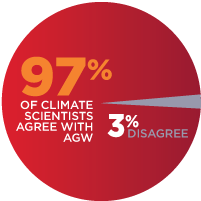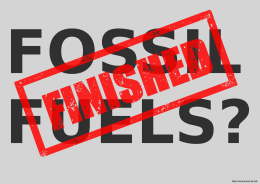And this week’s climate denier PRATT award goes to …
… Des Moore, writing in the Sydney Morning Herald. Would you believe an amazing nine PRATT count in one short article! How much longer can the media continue to print catalogues of untruths like this one.
Here’s his article, with the PRATT marked. Check the table below for links to Skeptical Science, where they can be debunked for a thousand and one-th time.
The Sceptic, Des Moore
SINCE the 2007 report of the Intergovernmental Panel on Climate Change, and subsequent revelations of various exaggerations of potentially rising temperatures (PRATT No1), attitudes of governments and wider communities have changed towards the earlier proposal for urgent government action to reduce greenhouse gas emissions. By contrast with the build-up before the 2009 Copenhagen conference, the so-called sceptics have established a strong case for not proceeding urgently.
While political leaders still formally support the dangerous warming thesis, it is now evident that no binding international agreement on government emission reduction policies is obtainable. In particular, most leaders in low-income countries rightly take the view that the top priority is avoidance of emission reduction policies restricting their economic growth and poverty reduction (PRATT No2).
Hence, only a limited range of reduction policies has been adopted by individual governments and, except for a few believers, the urgency prescription has virtually disappeared. The US President, Barack Obama, has accepted that Congress will not buy a carbon tax and his opponent, Mitt Romney, has now declared the dangerous warming thesis a hoax. A Romney presidency could evoke a big change in attitudes of other political leaders.
The limited extent of reduction action does not reflect apathy but rather the emergence of a genuine questioning. This extends into the scientific community and, while still accepting that temperatures are likely to increase, most scientists now probably reject the dangerous warming thesis (PRATT No3). One of many explanations is the absence of temperature increases in periods when theory says they should have, such as over the 1940-77 (PRATT No4) and 1998-2011 years (PRATT No5). Another is that, while sea levels have been steadily increasing, the rate of increase is clearly not threatening (PRATT No6). Importantly, the panel’s models used to predict temperature increases have been wide of the mark, indicating serious defects in the theory (PRATT No7).
Examples of scepticism include the signatures of more than 30,000 US scientists for a petition (PRATT No8) that specifically rejects the theory of dangerous warming. Increasing numbers of peer-reviewed papers either do the same or seriously question it (PRATT No9), including papers by distinguished Australian scientists of my acquaintance. The government has mistakenly locked itself into a carbon tax that will have a minuscule effect on global emission levels but will leave many Australian businesses at a competitive disadvantage with overseas counterparts. This will probably disturb any apathy here.
Des Moore is director of the Institute for Private Enterprise and former deputy secretary, Treasury.
Here’s the real science behind each of Moore’s PRATT.









“…the dangerous warming thesis…”
I think you missed the most obvious PRATT, which is that global warming is anything less than a well understood, inevitable consequence of the fact that, in the same way that a gyroscope stays upright, the Earth always tries to maintain its radiative energy balance.
Yes, you’re right Martin. And that makes it a nice round 10. Thanks for picking it up.
I was not trying to be clever but, feel free to edit your original piece and delete my comment. 🙂